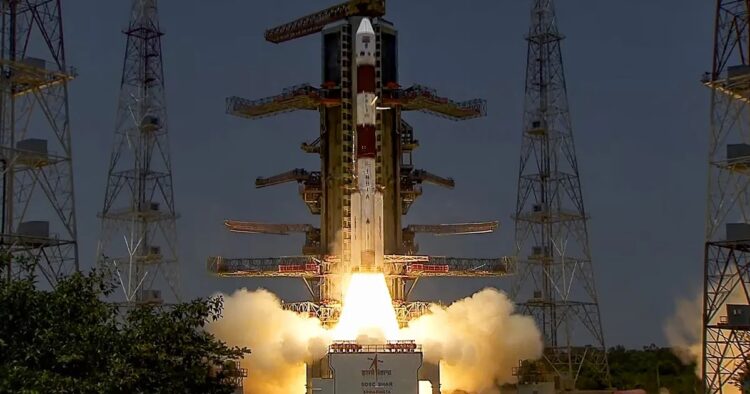In an exciting update, the Indian Space Research Organisation’s (ISRO) Aditya L1 solar mission is on the verge of reaching a major milestone. According to ISRO chief S Somanath, the spacecraft is scheduled to reach Lagrange point 1 (L1) of the Sun-Earth system on January 6. This strategic location will allow Aditya L1 to observe the sun without any eclipses, providing a unique vantage point for solar observations. The mission, which was launched in September, is now approaching its destination with precision.
Somanath shared this information during Techfest 2023, the Indian Institute of Technology Bombay’s annual science and technology event. He explained that the spacecraft will execute a controlled burn of its engine to enter a specific orbit known as the halo orbit upon reaching Lagrange point 1. This orbit is crucial for maintaining a stable position where the gravitational forces between Earth and the Sun balance out.
The Lagrange point, Somanath clarified, is a region where the gravitational forces from the Earth and the Sun neutralize, although absolute neutralization isn’t achievable due to the influence of other celestial bodies like the Moon, Mars, and Venus.
Somanath proudly reported that all six payloads on board Aditya L1 have undergone successful testing and are currently operational. These payloads are instrumental in gathering crucial data related to solar observations. Once Aditya L1 is in its designated orbit, it is poised to continuously observe the Sun, provided its internal electronics remain healthy and capable of transmitting data.
The ISRO chief expressed optimism about the mission’s potential to unveil correlations between the solar corona, mass ejections, and their impact on the space weather that Earth encounters daily.
Chandrayaan-3 Lunar Mission Update
Shifting the focus to India’s lunar exploration efforts, Somanath provided an update on Chandrayaan-3. After contributing valuable data for 14 days, the Pragyan rover is now at rest on the lunar surface. Despite hopes for its reactivation, the rover remains inactive. Somanath noted that certain systems, which functioned perfectly in laboratory tests, may face challenges on the lunar surface due to factors like radiation.
While the rover’s prolonged dormancy is unfortunate, it highlights the complexities and uncertainties associated with space exploration. Despite setbacks, ISRO remains committed to advancing scientific understanding and exploration beyond Earth’s boundaries.

















Comments